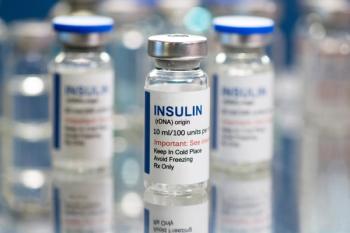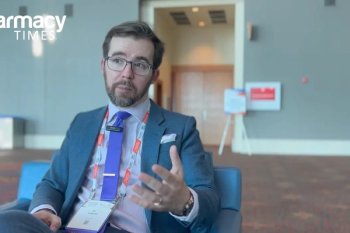
Top 5 Health System Pharmacy Trends Outlined at ASHP
Specialty market growth highlighted at the American Society of Health-System Pharmacists Midyear Clinical Meeting 2016.
As specialty pharmacy continues its exponential growth, stakeholders throughout the health care landscape have zeroed in on specialty services, which have significantly improved patient care.
The growth of specialty pharmacy was among the hottest topics discussed at the American Society of Health-System Pharmacists Midyear Clinical Meeting 2016, held from Dec. 4 to 8, 2016, in Las Vegas, NV. In fact, specialty pharmacy topped the list of the top 5 trends identified by McKesson Pharmacy Optimization that will impact hospital and health system pharmacies next year.
McKesson’s 2017 Top 5 Health System Pharmacy Trends
1. Continued Growth in Specialty Market
McKesson pointed to the growth of specialty drug spending as the top trend that will impact health systems next year. Specialty medication spending continues to outpace the overall pharmaceutical market as the top spending category for health system pharmacies.
“The expansion of limited networks and exclusive distribution channels for many specialty pharmaceuticals challenge health systems’ continuity of care initiatives,” McKesson stated in a press release. “However, opportunities still exist for health system pharmacy leaders who understand and can demonstrate the unique clinical and operational competencies and expertise required to build, buy or partner with specialty pharmacies. Additionally, with the growth of biosimilars, pharmacists are poised to play a critical role in evaluating the balance between risks and patient benefit.”
2. Leveraging Pharmacy Analytics to Make Strategic Business Decisions
The integration of comprehensive pharmacy analytics that track and monitor drug spending, usage, patient care, and quality is among the main priorities for health systems, according to McKesson.
“Organizations can use this information to make better financial, clinical and operational decisions and drive improved outcomes,” the company wrote. “For example, Drug Spend Intelligence is a web-based portal that shows users data on price trends and drug use, which helps identify causes of spending increases and waste and maps ways to contain formulary costs.”
3. Health System Pharmacy Seen as a Revenue and Margin Generator
McKesson noted that while cost management remains important, health systems stakeholders are seeking to increase revenue and improve margins through pharmacies. Additionally, McKesson noted that greater use of mail order to ship medications directly to patients could become a prominent revenue stream.
“As health care consumerism grows, health systems will need to find new ways to capture patients as network participation will not be enough,” McKesson wrote. “For example, health systems can extend their continuum of care by providing discharge medications through their ambulatory/retail pharmacies. More and more health systems are looking for partnership opportunities with retail pharmacies to share patient data to ensure all healthcare practitioners have access to current information.”
4. Centralizing Pharmacy Operations and Improving Clinical Services
Centralizing pharmacy operations can improve large health systems by creating a hub that manages costs, improves order entry and verification, and standardizes policies and procedures, McKesson said. Software tools and services allow large health system pharmacists and pharmacy staff to focus on improving patient care initiatives, while generating revenue by offering services to other hospitals, clinics, and retail pharmacies, according to the press release.
“This need for efficiency is also bolstering the use of centralized service centers to streamline pharmaceutical ordering, packaging and dispensing. These centralized functions can result in better efficiency and improved safety and cash flow,” McKesson said. “The importance of inventory management and supply chain visibility is evidenced by McKesson’s acquisition of Supplylogix, which is a comprehensive inventory management solution designed to help improve supply chain efficiency and improve patient satisfaction.”
5. Future Directions for Reform and the Affordable Care Act (ACA)
The future of the ACA is very much in doubt under President-elect Donald Trump, who has suggested at least a partial or full repeal of the legislation. The impact of the potential changes to the ACA on health systems remains equally uncertain.
Republican lawmakers seem poised to eliminate the individual mandate, reduce ACA-related taxes, and do away with Medicaid expansion.
“Removing the mandate will increase the uninsured numbers as charity care cases go back up,” McKesson stated. “Programs such as Pharmaceutical Assistance from manufacturers and services such as MedSource, offered through McKesson, will continue to bring value, ultimately helping health systems to continue to provide care and minimize write-offs.”
Newsletter
Stay informed on drug updates, treatment guidelines, and pharmacy practice trends—subscribe to Pharmacy Times for weekly clinical insights.













































































































































































































